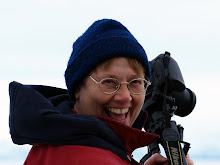

I began this painting with an overall flat wash of viridian, covering the entire surface of the quarter-sheet of paper.
A flat wash requires a steady hand and good timing in applying the wet paint: excellent practice for me!
After the wash was thoroughly dry, I started painting the sequence of today's 16 blocks with varying dilutions of prussian blue, using a wet brush to remove the underpainting or simply painting over it.
I discovered that a sufficiently wet brush and enough pressure would remove two layers of dried paint, so there are several areas where I have scrubbed back to the white surface.
This effect is similar to Day 6 in Layers: Transparent Washes, but this time it's not an accident, and the brushstrokes make it a lot more lively.
A flat wash requires a steady hand and good timing in applying the wet paint: excellent practice for me!
After the wash was thoroughly dry, I started painting the sequence of today's 16 blocks with varying dilutions of prussian blue, using a wet brush to remove the underpainting or simply painting over it.
I discovered that a sufficiently wet brush and enough pressure would remove two layers of dried paint, so there are several areas where I have scrubbed back to the white surface.
This effect is similar to Day 6 in Layers: Transparent Washes, but this time it's not an accident, and the brushstrokes make it a lot more lively.

2 comments:
Very pretty. It does look lively. Prussian blue is such a great color in watercolors.
I like your work. Also, it's nice to learn from your description of what techniques you used.
Post a Comment